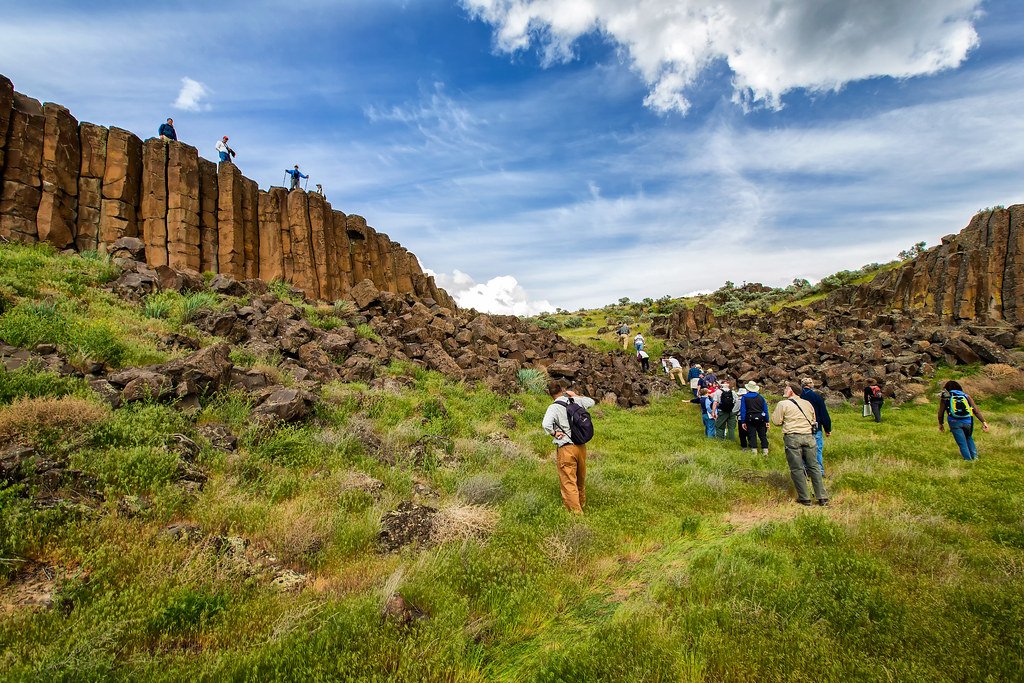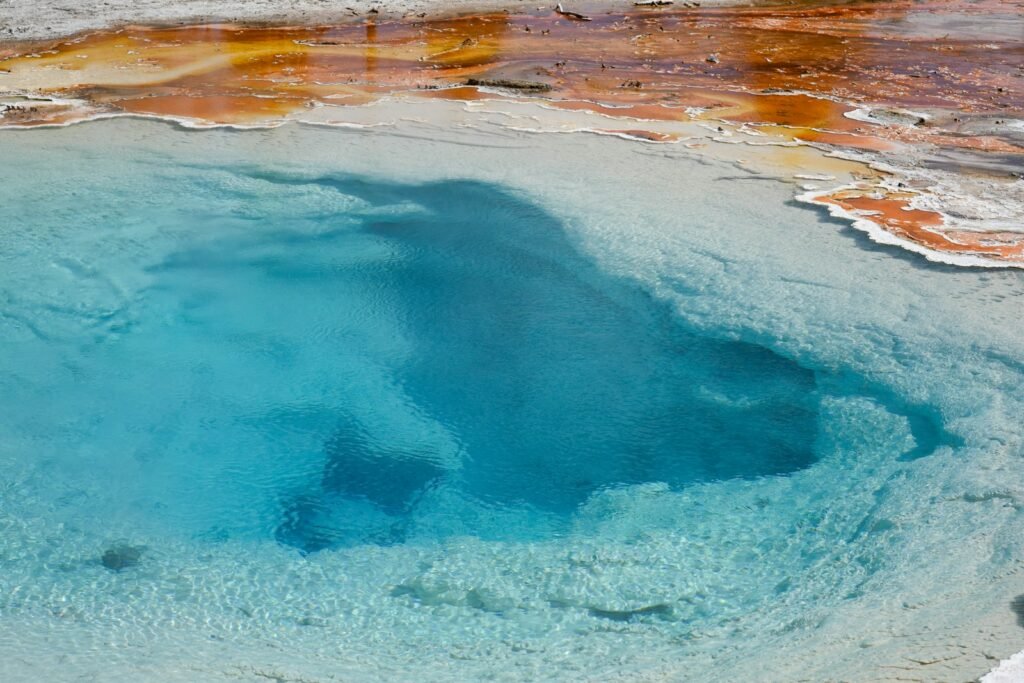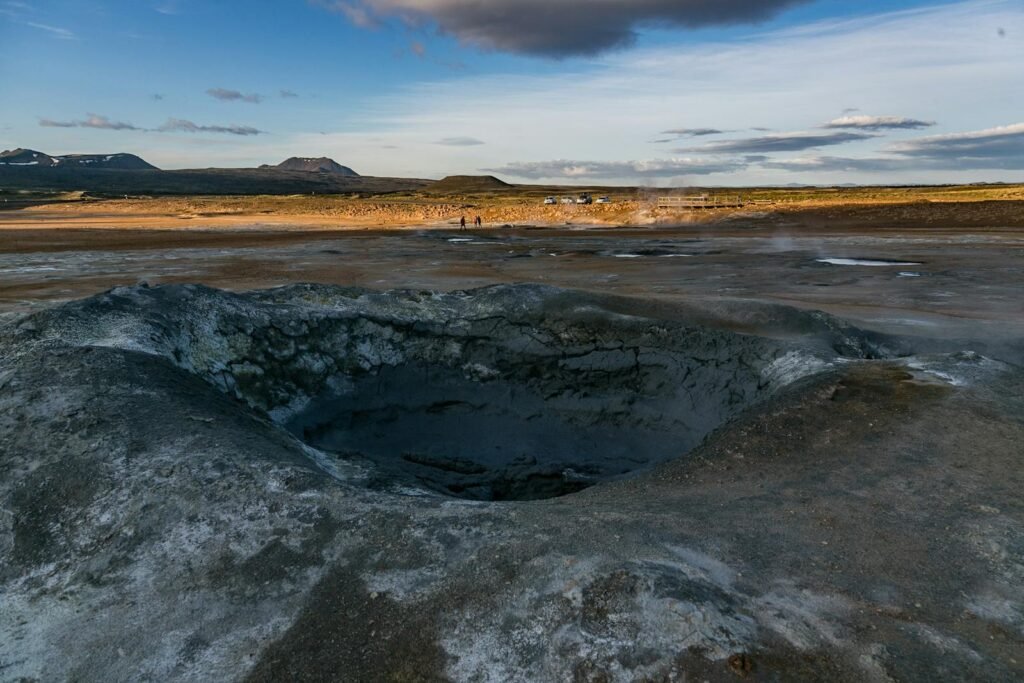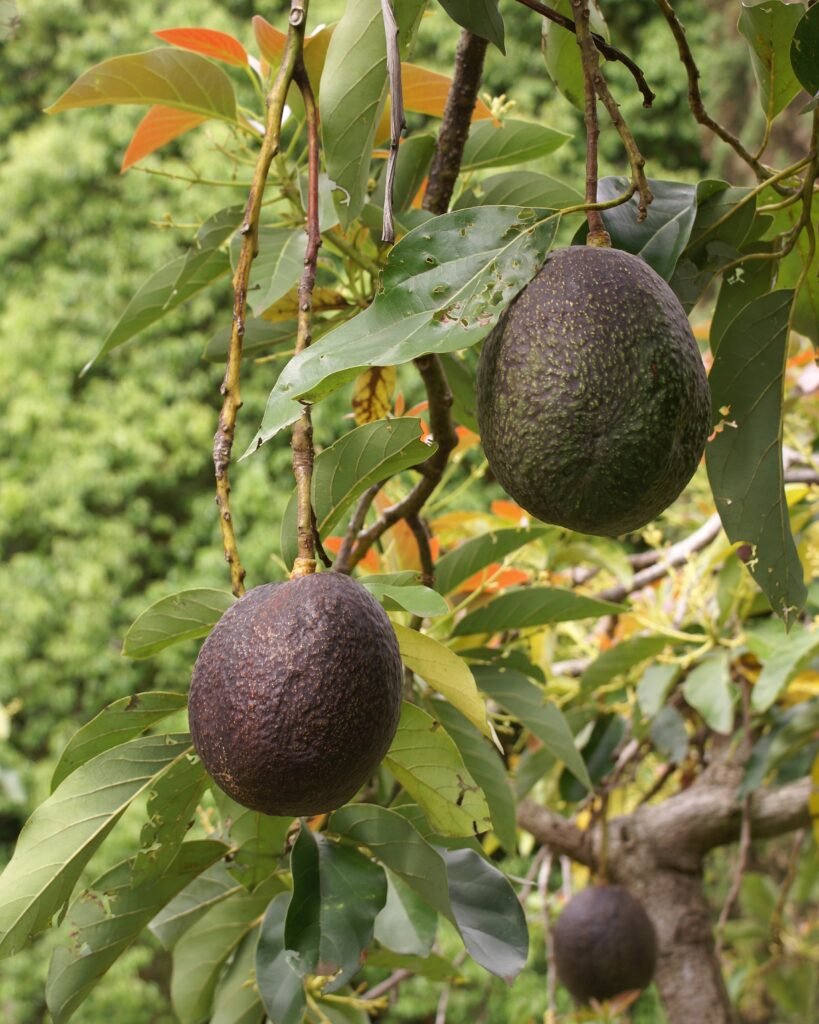Our planet might seem peaceful today, but beneath its serene surface lies a story written in stone, ash, and twisted metal. Earth has endured catastrophes so immense they’ve reshaped continents, wiped out entire species, and left scars that remain visible millions of years later. These aren’t just geological curiosities – they’re windows into our planet’s most dramatic moments, when fire, ice, and cosmic forces unleashed their fury with unimaginable power.
The Chicxulub Crater: Where Giants Fell Silent

Hidden beneath Mexico’s Yucatan Peninsula lies one of Earth’s most significant crime scenes – the Chicxulub crater. This massive scar, stretching 150 kilometers across, marks the spot where a 10-kilometer-wide asteroid slammed into our planet 66 million years ago. The impact released energy equivalent to billions of nuclear bombs, instantly vaporizing rock and sending shockwaves around the globe.
What makes this site truly haunting is what it represents: the end of the dinosaurs’ 165-million-year reign. The collision triggered wildfires across continents, acid rain that poisoned oceans, and a nuclear winter that lasted for years. Today, visitors to the region walk unknowingly over ground zero of one of life’s greatest catastrophes, where mighty T-Rex and gentle Triceratops met their doom in a single, terrible day.
Deccan Traps: India’s Volcanic Nightmare

In western India, layers of ancient lava tell the story of volcanic fury that nearly ended life on Earth. The Deccan Traps represent one of the largest volcanic events in our planet’s history, when massive eruptions spewed lava across 500,000 square kilometers. These weren’t ordinary volcanic eruptions – they were flood basalts that poured molten rock like water for over 30,000 years.
The scale is mind-boggling: the lava flows were so massive they could have buried the entire United States under 500 meters of molten rock. Some scientists believe these eruptions, occurring around the same time as the Chicxulub impact, created a double blow that sealed the dinosaurs’ fate. The toxic gases released poisoned the atmosphere, while the sheer volume of lava altered global climate patterns permanently.
Vredefort Dome: Earth’s Oldest Battle Scar

South Africa’s Vredefort Dome holds the record as Earth’s oldest and largest confirmed impact crater, created when a massive asteroid struck our planet 2 billion years ago. This ancient wound, now 300 kilometers across, offers a glimpse into Earth’s violent youth when space rocks regularly pummeled our planet’s surface. The impact was so powerful it created pressures and temperatures that transformed ordinary rocks into new minerals found nowhere else on Earth.
What’s remarkable about Vredefort is how erosion has exposed the crater’s deep structure, revealing layers that were once buried 25 kilometers underground. Geologists can literally walk through the impact’s aftermath, studying rocks that were melted, twisted, and reformed by forces that defy human comprehension. The site serves as a natural laboratory for understanding how massive impacts shape planetary surfaces.
Siberian Traps: The Great Dying’s Smoking Gun

Russia’s Siberian Traps represent Earth’s closest brush with total extinction, marking the site of volcanic eruptions that nearly ended all life 252 million years ago. These flood basalts covered an area larger than the entire European Union with lava up to 6 kilometers thick. The eruptions lasted for 60,000 years, pumping enormous quantities of carbon dioxide, sulfur dioxide, and other toxic gases into the atmosphere.
The result was the Permian-Triassic extinction event, known as “The Great Dying,” which eliminated 96% of marine species and 70% of terrestrial vertebrates. Ocean temperatures soared, acid rain fell continuously, and the atmosphere became so toxic that it took millions of years for life to recover. Today, visitors to the region can see the layered remains of this apocalyptic event preserved in cliff faces and river valleys.
Channeled Scablands: When Ice Dams Burst

Eastern Washington’s Channeled Scablands look like an alien landscape, carved by floods so massive they dwarf any natural disaster in recorded history. During the last ice age, glacial ice dams repeatedly formed and burst, releasing Lake Missoula’s waters in catastrophic floods that carved channels through solid basalt bedrock. These floods moved water at velocities of 100 kilometers per hour and carved canyons 200 meters deep in just days.
The evidence of this violence is everywhere: massive boulders called erratics that were carried hundreds of kilometers from their source, giant ripple marks in the landscape that look like those left by streams but measure hundreds of meters across, and coulees carved so deep they expose layers of ancient lava flows. The floods happened repeatedly over thousands of years, each one reshaping the landscape with brutal efficiency.
Sudbury Basin: A Cosmic Collision’s Legacy

Ontario’s Sudbury Basin tells the story of one of Earth’s most economically significant catastrophes, created when a massive asteroid or comet struck the planet 1.85 billion years ago. The impact created a crater 250 kilometers across and melted so much rock that it formed vast pools of molten material. As this material cooled, it concentrated valuable metals like nickel, copper, and platinum into rich ore deposits.
What makes Sudbury unique is how the impact literally turned destruction into treasure. The heat and pressure from the collision created geological processes that concentrated metals in ways that would have taken millions of years under normal conditions. Today, the area produces 10% of the world’s nickel and has been continuously mined for over a century, making it a rare example of how cosmic violence can benefit humanity.
Tunguska Event Site: When the Sky Exploded

In 1908, something exploded over Siberia’s remote Tunguska region with the force of 1,000 Hiroshima bombs, flattening 2,000 square kilometers of forest in a radial pattern. The blast was so powerful it knocked people off their feet 60 kilometers away and was heard 800 kilometers distant. Trees were stripped of branches and bark, then laid flat like matchsticks pointing away from ground zero.
What makes Tunguska particularly mysterious is that no crater was ever found, leading scientists to believe a comet or asteroid exploded in the atmosphere before impact. The event demonstrates how even “near misses” can cause devastating damage, and serves as a sobering reminder of the cosmic threats that still exist today. The forest has largely regrown, but the geometric pattern of fallen trees remains visible in satellite images over a century later.
Mount Toba: The Supervolcano That Almost Ended Humanity

Indonesia’s Lake Toba sits peacefully in a caldera created by the most recent supervolcanic eruption in Earth’s history, which occurred 74,000 years ago. This wasn’t just another volcanic eruption – it was a planet-changing event that ejected 2,800 cubic kilometers of material into the atmosphere, creating a volcanic winter that lasted for years. The eruption was so massive it left a lake 100 kilometers long and 30 kilometers wide in the collapsed caldera.
Some scientists believe the Toba eruption nearly drove early humans to extinction, reducing our ancestors to just a few thousand individuals. The volcanic winter it created lowered global temperatures by 3-5 degrees Celsius and caused widespread famine across Africa and Asia. Today, the peaceful lake gives no hint of its violent birth, but core samples from around the world still contain layers of Toba ash, testament to this catastrophe’s global reach.
Manicouagan Crater: The Eye of Quebec

From space, Quebec’s Manicouagan Crater looks like a giant eye staring up from Earth’s surface, its ring-shaped lake formed by one of the largest confirmed impact events in our planet’s history. Created 214 million years ago by an asteroid estimated to be 5 kilometers across, the original crater was 100 kilometers in diameter. The impact occurred during the Triassic period, possibly contributing to the mass extinction that ended this geological era.
What makes Manicouagan special is how perfectly preserved it remains after 200 million years. The central uplift, formed when the Earth’s crust rebounded after impact, rises 590 meters above the surrounding terrain. The crater’s rim is still clearly visible, filled with a lake that follows the ancient impact structure. Indigenous peoples called it the “eye of Quebec,” recognizing its unique circular shape long before its cosmic origin was understood.
Yellowstone Caldera: The Sleeping Giant

Beneath Yellowstone National Park lies one of the world’s largest active volcanic systems, a supervolcano that has erupted catastrophically three times in the past 2.1 million years. The most recent eruption, 640,000 years ago, ejected 1,000 cubic kilometers of material and created the 45-by-85-kilometer caldera that defines much of the park today. The eruption buried large parts of North America under volcanic ash and caused global climate changes.
What’s terrifying about Yellowstone is that it’s still active, with magma chambers stretching deep into the Earth’s mantle. The ground rises and falls as these chambers fill and empty, while hot springs and geysers provide constant reminders of the volcanic forces below. If Yellowstone erupted today with the same intensity as its past eruptions, it would devastate much of North America and affect global climate for years.
Meteor Crater: Arizona’s Cosmic Scar

Arizona’s Meteor Crater is perhaps the world’s best-preserved impact crater, created just 50,000 years ago when a nickel-iron meteorite slammed into the desert at 43,000 kilometers per hour. The crater measures 1.2 kilometers across and 170 meters deep, with raised rims that tower 45 meters above the surrounding plain. Unlike many impact sites, Meteor Crater has been protected from erosion by the desert’s dry climate.
The crater serves as a perfect natural laboratory for studying impact processes, and NASA has used it to train astronauts for lunar missions. Fragments of the meteorite, scattered across the surrounding landscape, contain minerals that only form under extreme pressure and temperature conditions. The site demonstrates how even relatively small cosmic impacts can create dramatic and lasting changes to Earth’s surface.
Bushveld Complex: Ancient Magma’s Treasure Trove

South Africa’s Bushveld Complex represents one of the largest layered igneous intrusions on Earth, formed 2 billion years ago when massive amounts of magma slowly cooled and crystallized underground. The complex covers 65,000 square kilometers and contains the world’s largest reserves of platinum, chromium, and vanadium. This geological formation shows how ancient volcanic activity concentrated valuable minerals in ways that continue to benefit humanity today.
What makes the Bushveld Complex extraordinary is its layered structure, where different minerals crystallized at different temperatures as the magma cooled. These layers are so consistent they can be traced across hundreds of kilometers, creating a geological record of ancient magmatic processes. The complex produces 70% of the world’s platinum and demonstrates how Earth’s violent past created the mineral wealth that powers modern technology.
Hawaiian Hotspot Chain: Volcanic Conveyor Belt

The Hawaiian island chain represents one of Earth’s most visible examples of ongoing volcanic violence, created as the Pacific Plate moves over a stationary hotspot in the mantle. This geological conveyor belt has been creating and destroying islands for millions of years, with active volcanoes like Kilauea and Mauna Loa continuing to add new land to the Big Island. The hotspot’s power is evident in Kilauea’s recent eruptions, which have destroyed hundreds of homes and created new coastline.
What’s remarkable about the Hawaiian chain is how it tells the story of plate motion over geological time. Older islands to the northwest show the scars of volcanic violence now quieted, eroded into dramatic cliffs and valleys. The youngest islands showcase ongoing volcanic activity, with lava flows that can be observed in real-time as they reshape the landscape and create new land from molten rock.
Ring of Fire: Earth’s Violent Necklace

The Pacific Ring of Fire encircles the Pacific Ocean with a necklace of volcanoes, earthquake zones, and tectonic activity that accounts for 90% of the world’s earthquakes and 75% of its active volcanoes. This 40,000-kilometer horseshoe of geological violence stretches from New Zealand through Indonesia, Japan, Alaska, and down the western coasts of the Americas. The Ring of Fire exists because the Pacific Plate is being subducted beneath surrounding plates, creating the conditions for massive volcanic eruptions and devastating earthquakes.
Recent events along the Ring of Fire demonstrate its ongoing violence: the 2004 Indian Ocean tsunami, Japan’s 2011 Tohoku earthquake, and Indonesia’s frequent volcanic eruptions all occurred within this zone. The Ring of Fire serves as a constant reminder that Earth’s tectonic forces remain active and dangerous, capable of unleashing devastation that affects millions of people and reshapes entire regions in minutes.
Lessons Written in Stone and Ash

These sites across our planet serve as monuments to Earth’s capacity for destruction and renewal. From asteroid impacts that ended evolutionary eras to volcanic eruptions that nearly sterilized the planet, each location tells part of a larger story about the forces that have shaped our world. They remind us that the peaceful Earth we know today has endured catastrophes beyond our imagination and emerged stronger each time.
The scars of these ancient catastrophes aren’t just geological curiosities – they’re warnings about the dynamic nature of our planet. They show us that dramatic change is not only possible but inevitable, and that life’s greatest challenges often become the foundation for new evolutionary opportunities. Understanding these violent episodes helps us appreciate both the fragility and resilience of life on Earth.
What would you have guessed about the true power hidden beneath our planet’s peaceful surface?




